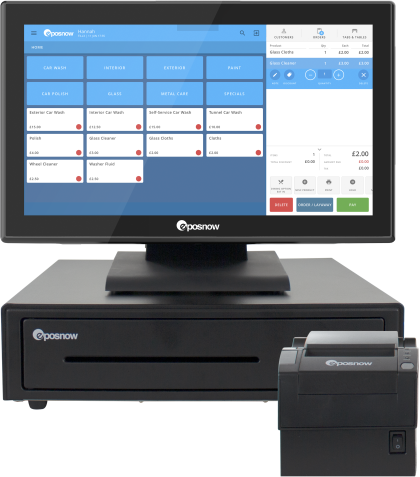How to Price a Product
One of the biggest challenges in any business is evaluating your products, services, and position in the marketplace and judging the prices to charge for them. The complexity and the number of indirect material factors can make finding an effective pricing strategy extremely difficult.
Many new entrepreneurs and business owners struggle to get pricing right. This is why having several different product pricing methods is useful and is probably why you’re reading this guide.
Understand how much your product costs to produce
Given that profit is a figure inexorably tied to production costs, the first step in any product pricing strategy should be to establish the cost incurred in getting that product ready to be sold.
One of the difficult things for many smaller businesses to take, whether in retail or in hospitality, is that production costs are much higher the smaller you are. Competitive pricing is therefore much more difficult with the big brand chain next door, but this just means that a clever, dynamic pricing decision is all the more important.
To provide a costing of a product example, a company might break costs down into these main groups:
- Manufacturing costs: The largest production cost for an individual product tends to be the manufacturing or purchasing cost from the suppliers for the material good to be sold. This is the easiest to calculate as it involves only the supplier fees for retailers. Although if you are producing your own product, you may include a few of the below expenses as part of your manufacturing expenses, especially if this is done off-site.
- Utilities: This includes the rental or mortgage payment for your premises, gas, electric, and water fees. You can also consider tradespersons bills to be a part of this category for the upkeep of your business.
- Marketing expenses: Most businesses will use quite a lot of money to advertise and build their brand, which needs to be recouped through revenue.
- Labour costs: Your payroll for the team that sells your product and the rest of your team.
These costs can be split in various ways, but you’ll notice some expenses are directly involved with the product and some are not. Some, like marketing expenses, can only be approximated by judging what portion of your profits you expect this product to generate. That portion affects the price by determining how responsible its sales will be for covering the marketing budget.
Are you just starting out in business? Are you looking to expand your enterprise? No matter your trade, Epos Now are constantly expanding a POS system that can cater to every need:
- Gain every advantage with hundreds of apps and partnerships with the best software in every industry
- Sell safely and speedily with the latest transaction technology
- Use Epos Now Payments to incorporate card processing into your POS with simpler, easier style
- Manage your business stress-free with cloud technology that give you instant access to the latest business data, from anywhere in the world!

Pricing products and services according to a strategy
With a base cost established, many businesses go for a “cost-plus” pricing structure. This pricing model establishes the cost of the product then adds a business-wide markup, say 25%, to establish a consistent profit on items sold.
While such a method guarantees products sold will make a good profit, there are many other techniques other than cost-plus pricing that can achieve different things for businesses and still lead to excellent profits.
Value-based pricing strategy
Value-based pricing involves researching existing prices in the market and then assessing what makes your product different from the competition (and potentially what makes the competition different). Using that difference, businesses assign those characteristics values and add or subtract them from the existing prices.
This strategy can co-ordinate with a marketing model that focuses on what makes your business unique. Focusing on your unique elements of the business helps to build brand awareness, justifies any expense to the customer and can also be part of a prestige pricing model. Prestige or premium pricing is selling goods at a high price to suggest a quality of goods even if this isn’t reflected in the production costs.
Value-based pricing models can encourage customer loyalty, too, because it forces businesses to stress what makes them different. As a result, customers consciously think during and after purchase about why they bought and why they liked your particular product, separating you from the market.
Penetration pricing
Both penetration pricing and loss leader pricing are not strategies that new businesses can usually incorporate on a wide scale. But they can be used on certain products in certain situations to help increase their market share.
Penetration pricing is about choosing a consciously low price point, perhaps even running a loss on a product, to encourage customers comparing prices to leave an existing brand for the better value on offer.
Once the business’s customer base has grown, the business exacts a price increase with greater brand awareness and product familiarity established. The price hike may cost customers, but many will remain and the business can start to turn a greater profit.

Loss leader pricing
Loss leader pricing is not dissimilar to penetration pricing in that it involves intentionally lowering costs to boost the sales volume of a company. However, loss leader pricing is incorporated into a longer-term strategy if successful, particularly in businesses well suited to it.
Loss leader strategies accept a loss on one product to get the customer to engage with the business and then purchase another product (often related to the first) that sells at a higher price with a better markup. The small loss on the first product is cancelled out by the profit of the second, provided the sale is made.
A good example of this is restaurants that target wet profits but aim to attract customers with great offers on the low-profit dry products.
Sometimes, the two linked products can be incorporated or adjusted into bundle pricing, which provides greater value to the customer by lowering the percentage profit to the business but increases total spending.
Price skimming and anchor pricing
Both price skimming and anchor pricing involve a similar psychological trick to prestige pricing in that they involve intentionally overpricing products. However, rather than using this price to suggest quality, a business can then cut the price to a more standard profit to make it seem the product is being sold at fantastic value.
Anchor pricing is the most common form of this. Initially (and briefly) sell the product high, and then cut the price and loudly advertise the price drop. This is commonly seen in retail as a high price label with a strikethrough line, then a lower price which looks good in comparison.
Price skimming is something larger and established companies tend to employ, which involves selling current products at a premium, then reducing the price of older products to create the impression of bargain products that are only a little out of date.
Tech companies and the video game industry are great examples of price skimming strategies. They regularly release new products and reduce the price of the old ones which can then receive a boost in sales as the price is lowered.
Make better business decisions with Epos Now solutions
Managing and running your business is easier with technology that has every tool you need to do so. Epos Now EPOS (electronic point of sale) systems have hardware and software to suit your needs, These systems generate hundreds of reports to help you know more about your business and feel certain when the price is right.
Epos Now customers can:
- Create bespoke transaction setups on secure, speedy software to shave time off the sales process
- Choose from hundreds of apps and integrable partner programs to run accounting, marketing and other back of house functions in a way that suits you
- Access reports and manage prices and inventory on-site or off, night or day, through cloud technology
- Purchase all the retail or hospitality hardware and software and receive expert advice and support around the clock to get the best out of your business
To find out more about Epos Now solutions, submit your details below and speak to a member of our expert team.
You may also like:
How Can You Use Guerrilla Marketing to Promote Your Business?
Epos Now solutions are the trusted foundation of over 40,000 businesses all over the world!




